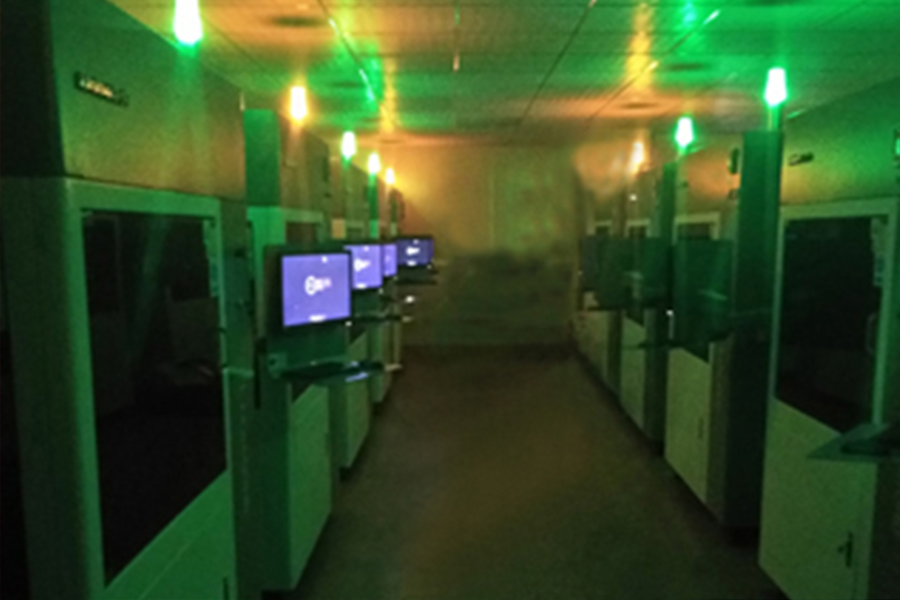With the rapid development of electronic technology, a large number of high-speed multi-functional or dedicated microprocessors and signal processors (such as DSP) have emerged, and the application of linear motors in the field of machine tools has ushered in its climax.
From the 1996 Chicago Machine Tool Show IMTS`96, the 18th International Machine Tool Show in Japan, to the Paris International EMO Expo in 1999 and a series of international influential exhibitions, Ingerell milling in the United States and Siemens IFNI), Japan ’s Sansei Corporation, Kollmorgen Corporation of the United States and other internationally well-known enterprises have shown the powerful charm of DC motors applied to various machine tools, which indicates that the new era of linear motors has arrived.
Application in the field of machine tools
High-speed and ultra-high-speed machining developed to improve production efficiency and improve the machining quality of parts have now become a major trend in the development of machine tools. A responsive, high-speed and light-weight drive system, the speed should be increased to above 40-50m / min, acceleration and deceleration also required to be increased to 25-50m / s2, the traditional “rotating motor + roller screw” transmission form is obviously not feasible Yes, this is determined by its own weaknesses, because the existence of the intermediate transmission link first reduces the stiffness, and the elastic deformation can make the order of the system higher, thereby reducing the robustness of the system and the servo performance. Elastic deformation is the root cause of mechanical resonance of CNC machine tools. Secondly, the existence of the intermediate transmission link increases the inertia of the moving body, making the displacement and speed response slower. In addition, factors such as gap dead zone, friction, and error accumulation make the maximum feed rate that this traditional method can reach 30m / min, and the acceleration is only 3m / s2.
The advantages of direct drive of DC motors can just make up for the shortcomings of the traditional transmission mode, its speed is 30 times that of the roller screw pair; the acceleration is 10 times that of the roller screw pair, the maximum can reach 10g, and the rigidity is improved 7 times; In addition, the linear motor directly drives the worktable, so there is no reverse working dead zone; due to the small armature inertia, the linear servo system composed of it can achieve a higher frequency response (such as 100Hz).
Through the above comparison, the application of linear motors has wide prospects in high-speed and ultra-high-speed precision machining. At present, the main requirements of the machine tool’s large thrust feed components are AC linear motors, which can be divided into two types: permanent magnet (synchronous) and induction (asynchronous) from the excitation mode. The permanent magnet type secondary (stator) is permanent magnet steel. When it is used on the machine tool, the permanent magnet steel needs to be laid on the bed of the machine tool. ). The inductive primary is the same as the permanent magnet, but the secondary is to replace the magnetic steel with electric grid bars, which is equivalent to spreading the “squirrel cage” of the induction rotating electrical machine along its circumference.
Permanent magnet linear motor is worse than induction type in terms of unit area thrust, power factor, controllability, etc., but the price is more expensive, and installation and debugging, dustproof, etc. are not as good as induction type. The high-speed horizontal machining center HVM800 produced by the American Ingersoll milling machine company adopts permanent magnet synchronous linear motors in its X, Y, and Z axes, with a maximum feed speed of 76.2m / min and an acceleration α = 1 to 1.5g.
Induction linear motors are close to the level of permanent magnet motors in performance, plus their own advantages, so they are more and more popular. A typical example in application is the XHC240 high-speed horizontal machining center developed by the German Ex-cell-o company. The three feed axes are directly driven by Indramat’s induction linear motor. The rapid movement speed is up to 60m / min, the maximum acceleration is 1g.
In the field of high-speed and ultra-high-speed machining, linear motors are widely used in high-speed milling machines, crankshaft lathes, super-precision lathes, grinding machines, laser lathes, etc. Now the more popular research is to apply it to high-speed parallel mechanisms, that is, six The machine tool with parallel axis and three-axis structure controls the cutter through the expansion and contraction of multiple sliding plungers to realize high-speed machining of complex surfaces. Zurich University of Technology has developed a six-slide machine tool with a new structure, which applies linear drive technology to the efficient milling of the machine tool. In addition, Russian Lapik and Ingersoll in the United States have carried out research in this regard, and formed products.
